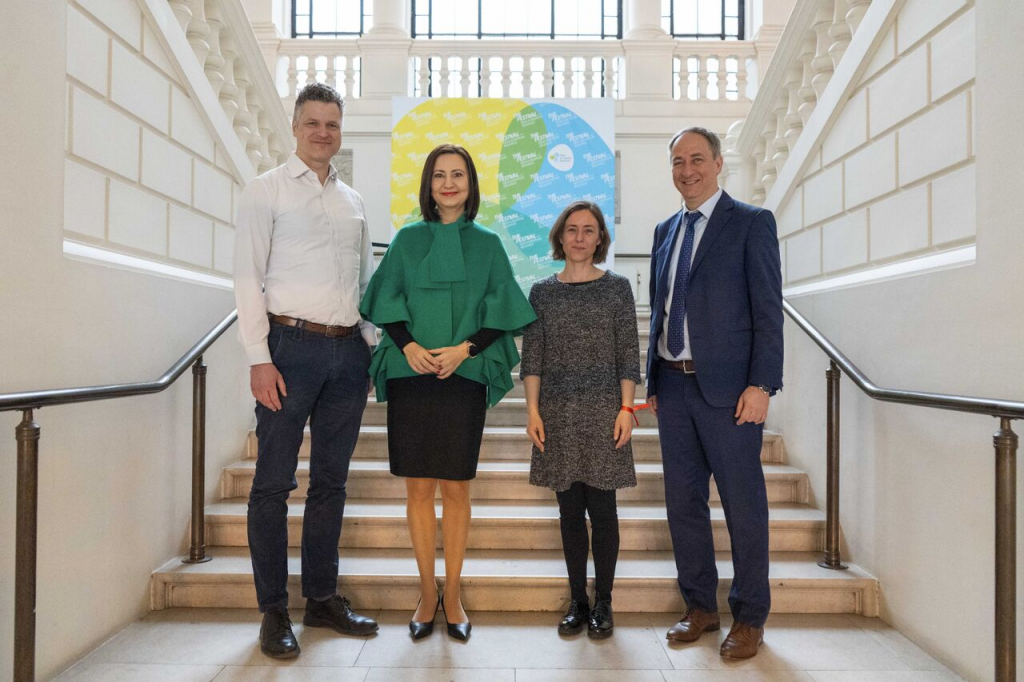
April 17, 2024


Clean air is a basic requirement for living a healthy life. Ensuring the finest air quality is of principal importance in buildings since people are spending an increasing amount of time inside homes, offices, schools, health care facilities or other private and public buildings. Pollutants generated outdoors might penetrate the indoor environment. Impurities produced indoors as a result of cooking, heating and dangerous substances emitted from construction materials might cause a broad range of health problems.
InnoRenew CoE is the project coordinator of the ARRS J2-2504 project “Autonomic edge computing for air quality monitoring”. Project partners include the University of Primorska and the Institute for the Protection of Cultural Heritage of Slovenia.
In this project, researchers look at wireless sensor networks (WSNs) to monitor the air quality of buildings. WSNs are composed of dozens or hundreds of small devices with built-in sensors. Devices are interlinked via radio signaling and are meant to be easily deployed, self-configurable and low cost. The large number of sensing devices in a WSN allows granular monitoring, making buildings equipped with WSNs able to self-assess and optimize their performance. However, in a typical WSN, devices are only sensing and reporting data, and the collective processing power of devices forming the WSN is neglected in favor of data processing on cloud systems.
The emerging edge computing paradigm is applied where data processing and data storage move as close as possible to data sources (i.e., nodes of a WSN) to alleviate the network and to take advantage of the increased computing power of small devices. More specifically, researchers integrate graph and infection models and distributed data mining into a decentralized service-oriented framework to implement dynamic self-configuring networks. The developed edge computing solution will optimize network usage, provide low latency response and preserve independence from cloud providers, thereby reducing the environmental cost of indoor air quality monitoring solutions.
The first year of project development yielded several achievements. A new, more efficient approach for the Floyd-Warshall algorithm for all-pairs shortest paths was developed. This new approach uses advanced techniques in data structures and algorithm engineering, and it might significantly impact future distributed systems. An efficient method for influence maximization was also conceptualized. The task of influence maximization is to find the best nodes to spread information in a graph or a network. This work has the potential to be applied in WSNs to find the best location of sink nodes (special nodes of the WSN that gather data and manage queries). Further, a new data mining classifier was developed based on association rules. The advantage of the proposed classifier is that it generates significantly smaller rules on bigger datasets compared to traditional classifiers while maintaining classification accuracy. Moreover, the proposed algorithm could be used for distributed data mining in the framework of distributed sensor networks.
Concerning data storage, a privacy-aware decentralized framework was designed. This solution eliminates the single point of failure and maintains the actors’ trust. It ensures trust and data availability using a combination of blockchain and distributed hash table.
Researchers in the project are developing a communication protocol to preserve data and query privacy in WSNs by relying on the onion routing technique. The onion routing technique is used to confine the knowledge a foreign actor can gain from messages traveling the network. In support of this study, they developed a simulation based on the ns-3 simulator to identify potential implementation constraints in large WSNs.
For data processing, a solution was proposed that dynamically allocates resources to applications to balance resource consumption across the network as it changes. This will enable the distribution of data processing tasks required on the WSN nodes.
However, the key element that ties up this project is the concept of an edge computing framework designed to connect different parts of the proposed solution while preserving independence from cloud providers. In the final stage of this project, the attempt will be to realize this concept and demonstrate its applicability with a set of pilot buildings that will be equipped with sensors. Several IAQ (indoor air quality) sensors will be deployed in each building to measure temperature, relative humidity, VOC (volatile organic compounds) and carbon dioxide. The following buildings will contribute to the project: a cultural heritage farm in Bled (ZVKDS – project partner), company offices in Hungary (AlbaComp), a primary school in Ajdovščina (ROD-RRA), a research office building in France (NOBATEK research institute) and a research laboratory building in Oregon, USA (University of Oregon).
Niki Hrovatin and Sidra Aslam,
researchers at InnoRenew CoE